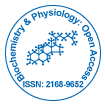开放获取期刊获得更多读者和引用
700 种期刊 和 15,000,000 名读者 每份期刊 获得 25,000 多名读者
索引于
- CAS 来源索引 (CASSI)
- 哥白尼索引
- 谷歌学术
- 夏尔巴·罗密欧
- 打开 J 门
- Genamics 期刊搜索
- 学术钥匙
- 期刊目录
- 乌尔里希的期刊目录
- 电子期刊图书馆
- 参考搜索
- 哈姆达大学
- 亚利桑那州EBSCO
- OCLC-世界猫
- 学者指导
- SWB 在线目录
- 虚拟生物学图书馆 (vifabio)
- 普布隆斯
- 欧洲酒吧
- ICMJE
有用的链接
开放获取期刊
分享此页面
抽象的
Role of Advanced Glycation End Products (AGE) in Health and Disease: An Overview
Sabitha Vadakedath and Venkataramana Kandi
Advanced Glycation End products (AGEs) are products derived from the reaction between reducing sugars and the aminoacids. The process of covalent linkage of a sugar with a protein or an amino acid is called as glycation. The AGEs are formed exogenously from animal derived foods which are rich in fat and protein. AGEs can be endogenously formed from hyperglycemic diet. The defense system of the body metabolizes the AGEs with the help of glyoxylase enzyme system utilizing glutathione and restricts AGEs formation. AGEs may accumulate in the body due to unhealthy dietary habits of an individual or due to uncontrolled diabetes. Thus, results in functional loss of long-lived proteins like collagen, skeletal and vascular smooth muscles. The cross-linking nature of AGEs impairs the function of proteins, damages the cell structure, produces Reactive Oxygen Species (ROS) and creates oxidative stress. In addition to this property of AGEs, its ability to bind with Receptors for Advanced Glycation End products (RAGE) leads to increased oxidative stress and activates inflammatory pathway in vascular endothelial cells. AGE-RAGE complex can in turn activate or inhibit the signaling pathways causing various clinical conditions like the Diabetes Mellitus (DM), Chronic Kidney Disease (CKD), neurodegenerative diseases, skin diseases, aging and cancer. Healthy living, good cooking and dietary habits can reverse the serious effects of AGEs.

 English
English  Spanish
Spanish  Russian
Russian  German
German  French
French  Japanese
Japanese  Portuguese
Portuguese  Hindi
Hindi